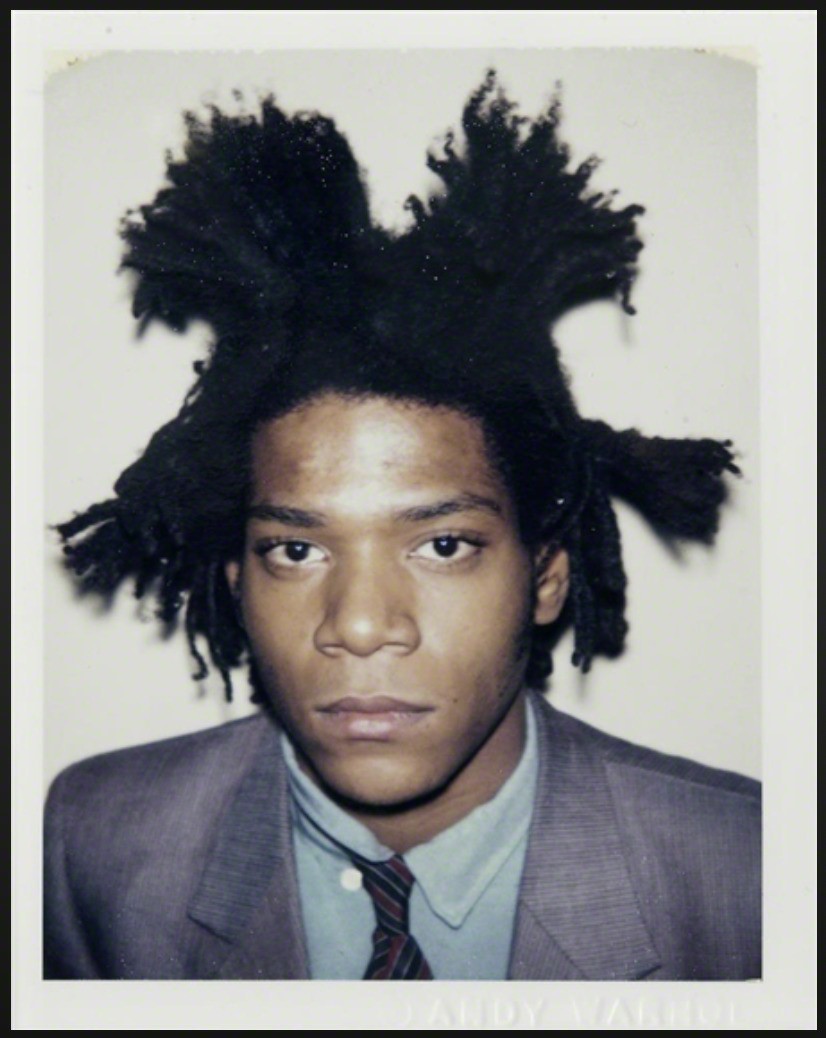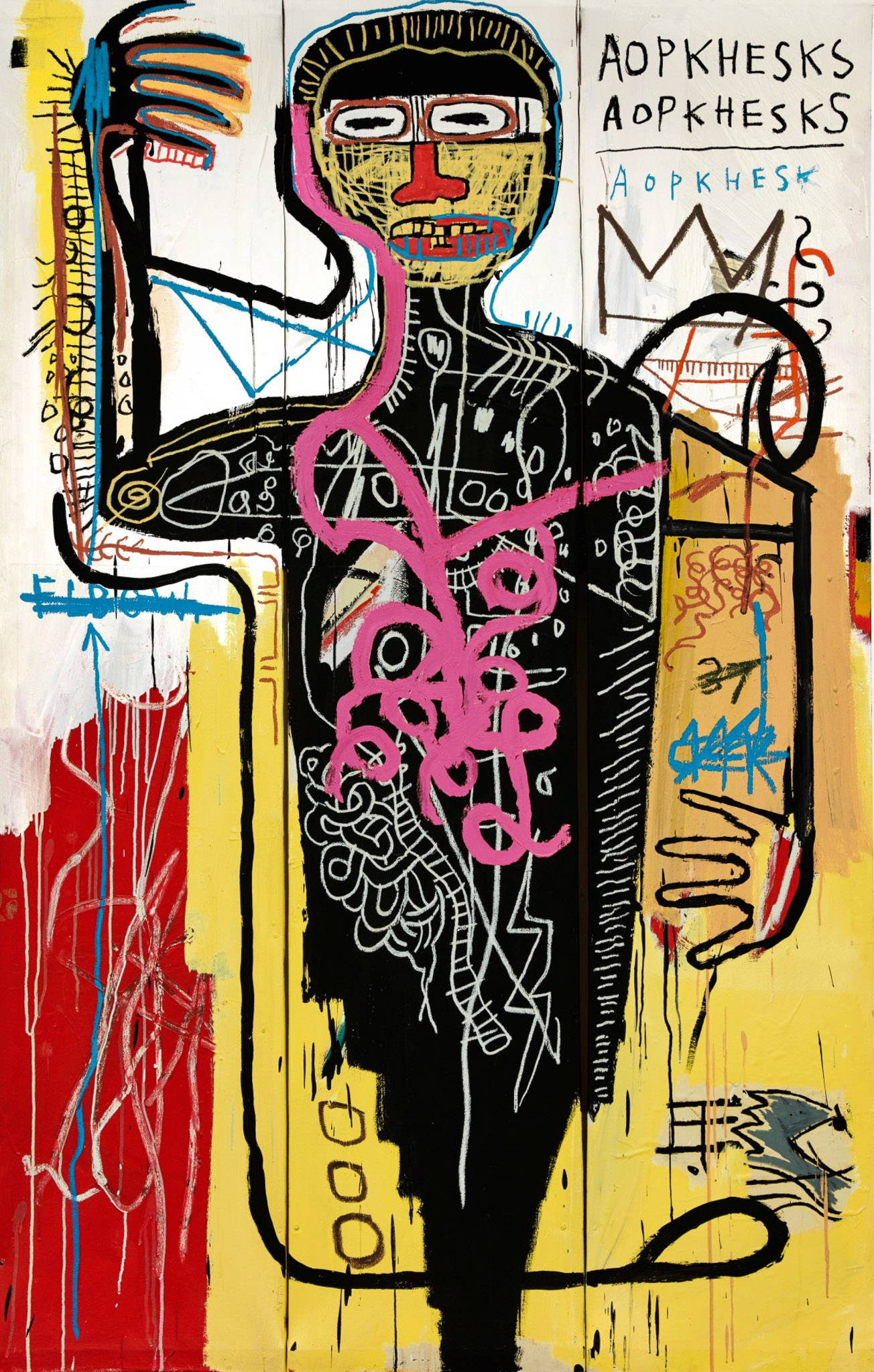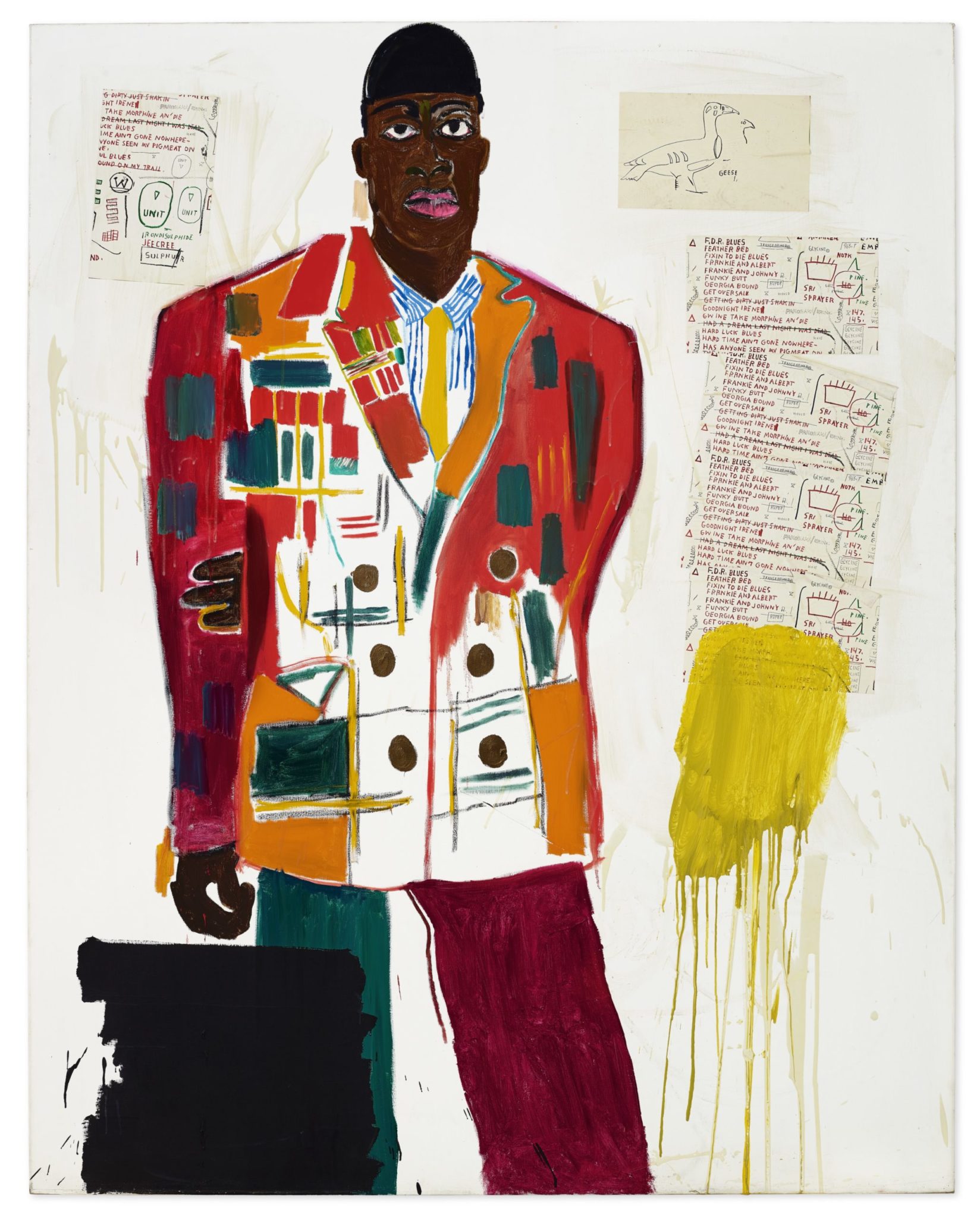
Andy Warhol, Polaroid Portrait of Jean-Michel Basquiat Polaroid 11 × 10 1/2 in
Jean-Michel Basquiat (French: [ʒɑ̃ miʃɛl baskja]; December 22, 1960 – August 12, 1988) was an American artist of Haitian and Puerto Rican descent. Basquiat first achieved fame as part of SAMO, an informal graffiti duo who wrote enigmatic epigrams in the cultural hotbed of the Lower East Side of Manhattan during the late 1970s, where rap, punk, and street art coalesced into early hip-hop music culture. By the 1980s, his neo-expressionist paintings were being exhibited in galleries and museums internationally. The Whitney Museum of American Art held a retrospective of his art in 1992.
Basquiat's art focused on dichotomies such as wealth versus poverty, integration versus segregation, and inner versus outer experience. He appropriated poetry, drawing, and painting, and married text and image, abstraction, figuration, and historical information mixed with contemporary critique.
Basquiat used social commentary in his paintings as a tool for introspection and for identifying with his experiences in the black community of his time, as well as attacks on power structures and systems of racism. Basquiat's visual poetics were acutely political and direct in their criticism of colonialism and support for class struggle. He died of a heroin overdose at his art studio at the age of 27. On May 18, 2017, at a Sotheby's auction, a 1982 painting by Basquiat depicting a black skull with red and black rivulets (Untitled) set a new record high for any American artist at auction, selling for $110.5 million.

